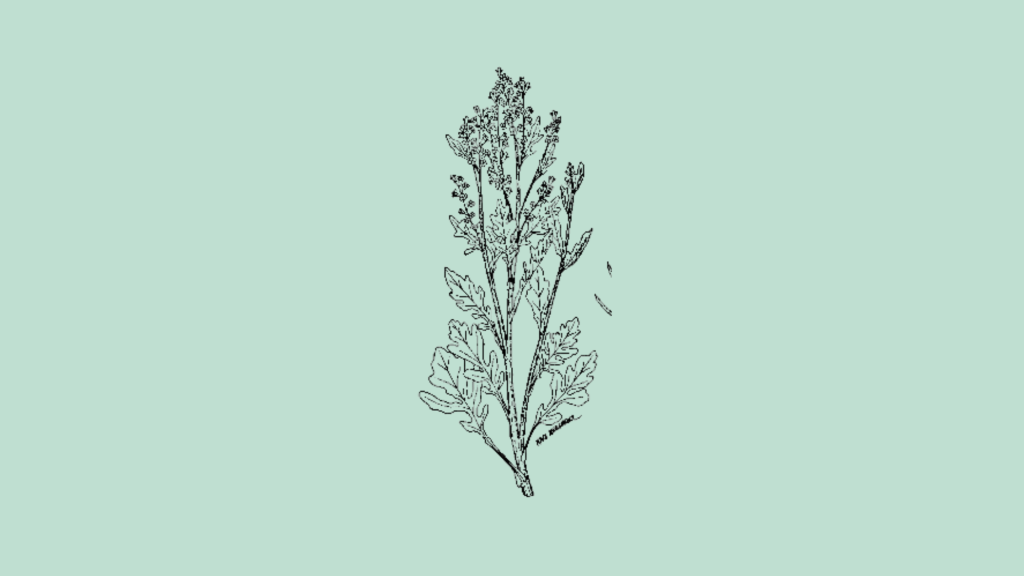Yellow rocket is a mustard native to Eurasia that has spread across North America over the years. As a staple in many farm and village kitchens in the spring and summer months, yellow rocket cress, also known as bittercress or winter cress, is fairly well known to older generations for its kitchen and medicinal uses.
The garden yellow rocket is a pest plant from Eurasia that thrives in disturbed soils, such as along roadsides, fields, and construction sites.
The plant can form large colonies but can also be found scattered.
Yellow rocket plant profile
Yellow rocket (Barbararea vulgaris), also known as common witch, is an invasive, non-native species in the Brassicaceae family. In the mustard family, it is a biennial herb of the genus Barbarea.
What Are You Foraging For Right Now?
We're thrilled to hear your ideas. What would you like to submit today? Feel free to share your thoughts and experiences with us.
Common names include:
- wintercress
- cressy-greens
- English wintercress
- herb barbaras
- rocketcress
- yellow rocketcress
- winter rocket
- yellow rocket
- wound rocket
- bittercress
- upland cress
Rocket flowers are winter annual or biennial wildflowers. Dark green glossy leaves form a rosette. An opposing pair of lateral lobes form on the leaf petiole of the basal leaf.
In a turf situation, this plant can reach up to three feet in height, but it can also tolerate mowing. Yellow rocket has a fibrous root system with a taproot.
Yellow rocket flowers appear in the late spring and are yellow in color. At the ends of stems, bright yellow flowers form in clusters, each with four petals.
The main reason this plant proliferates so easily is that the seeds of the yellow rocket are spread by wind.
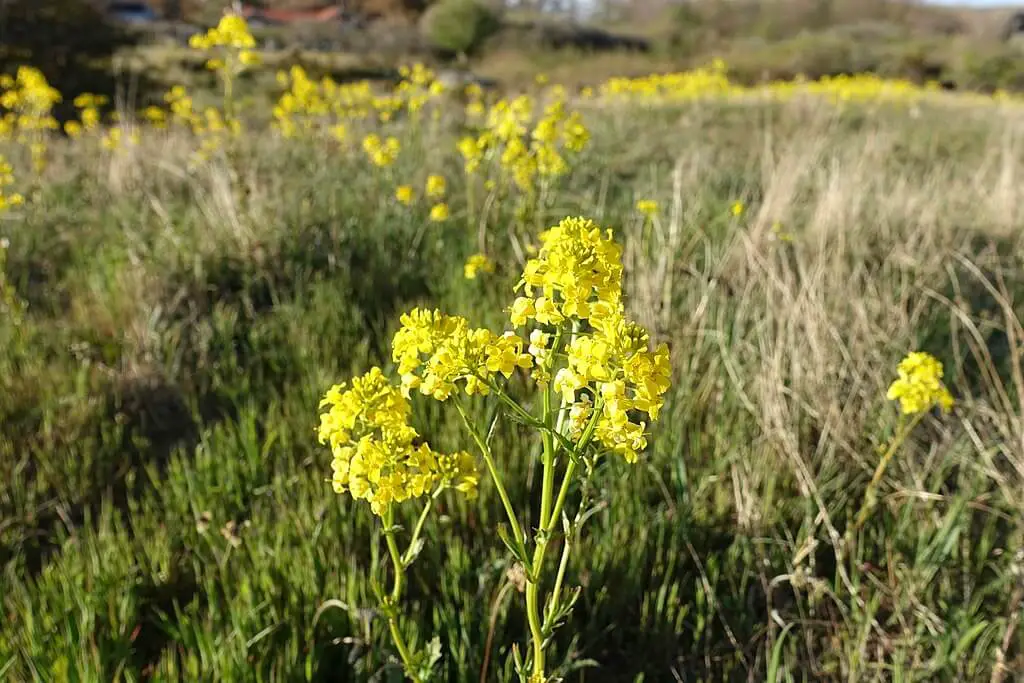
Flower characteristics
Rounded clusters of flowers measure 1 to 1-1/2 inches across at the top of branching stems in the upper plant.
There are four yellow petals, six yellow-tipped stamens, a slender style, and four yellow-green sepals on each flower. As the plant matures, clusters elongate, with flowers blooming at the tip and fruit forming along the stem.
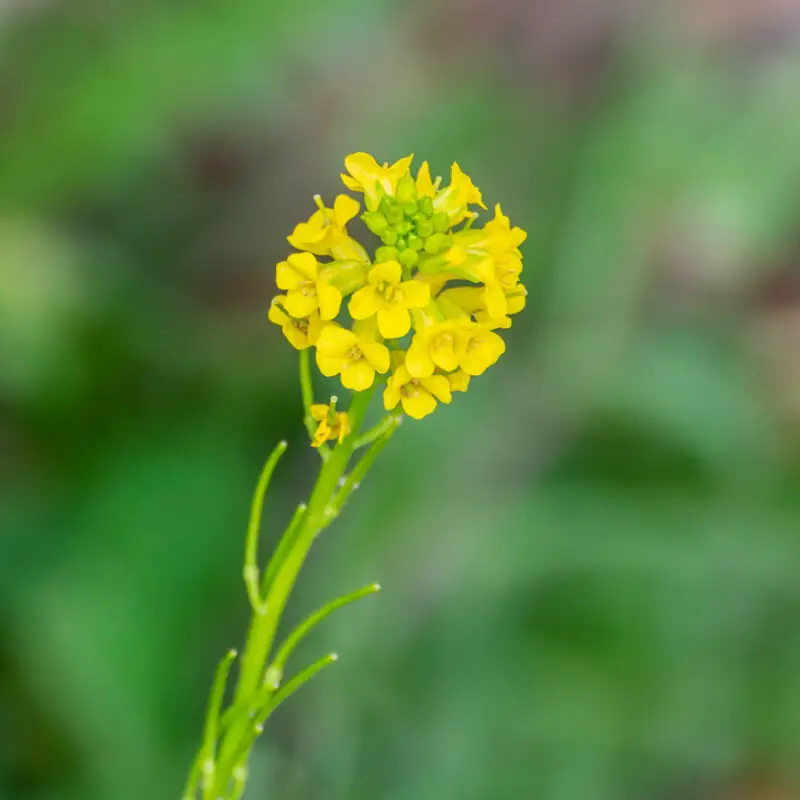
As the leaves ascend the stem, they become smaller and smaller. On the stalk, there are 1 to 4 pairs of small rounded lobes and a large rounded lobe near the base of the plant. Basal leaves are up to 6 inches in length at the base of the plant.
A basal leaf can grow up to 6 inches long and 2 and 1/2 inches wide; its edges tend to be wavy. Typically, stem leaves have a pair of lobes (auricles) at the base of the stalk.
Top leaves are smaller and somewhat variable; they may be unlobed, wedge-shaped, oval, or shallowly lobed with little or no stalk. There is a glossy appearance to the upper surface of all leaves. Alternate attachments are used.
It has branched, hairless, ridged, or angled stems that are purple or green with purple streaks or stripes. The stems are grouped at the base, forming a clump.
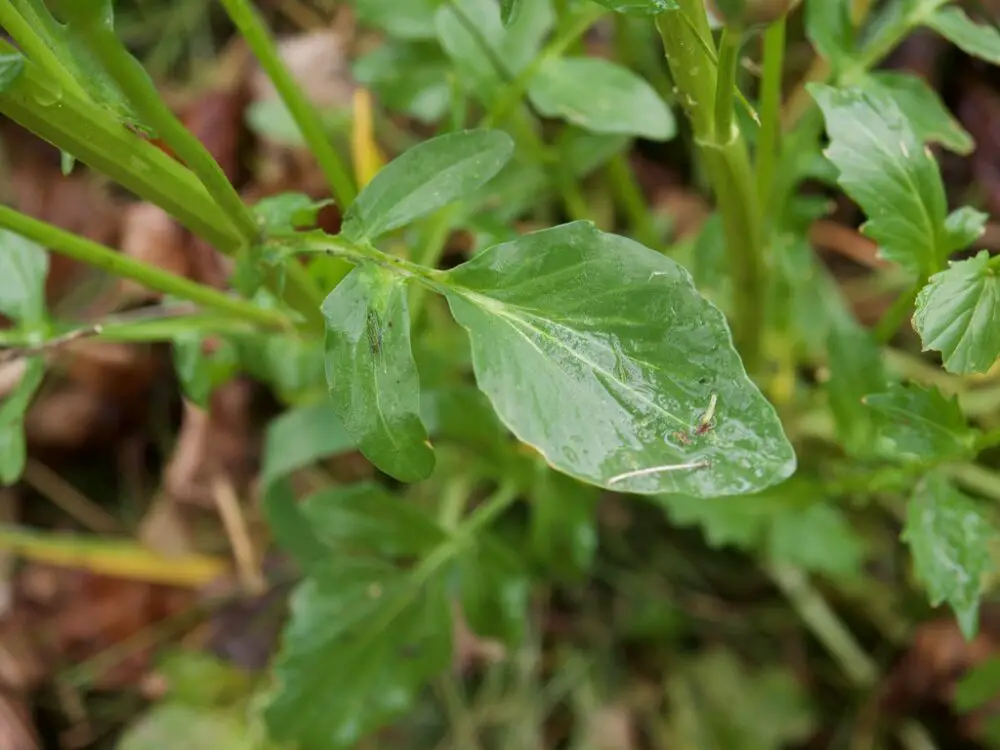
Is yellow rocket the same as mustard?
Yellow rocket is a member of the mustard family.
Often confused with wild mustard, this plant can be distinguished by its smaller, deeper golden yellow flowers, hairless leaves that are glossy green or even slightly purple in color, and the large terminal lobes within the leaves.
What is yellow rocket Good For?
Rocket cress, Barbarea vulgaris, is a nutrient-dense valuable herb for wound healing and works as an appetizer, anti-scorbutic, and diuretic.
Poultices made from the plant have been used historically for wound healing. Scurvy, caused by a deficiency of vitamin C, was thought to be effectively treated with this herb.
Yellow flowers on this weed are also natural diuretics. Moreover, using yellow rocket as a natural bitter is popular because of its bitterness.
Can you eat yellow rocket?
Yellow rocket’s young leaves are edible in the early spring but later become bitter (hence its common name bittercress).
Only the leaves (before flowering) are used as food, salads, pot herbs, or fried and are high in vitamins and minerals.
Using yellow rocket in the kitchen
In many ways, yellow rocket can be used like young mustard greens, as the Brits do with their beloved rocket.
Like broccoli, it can be used in the kitchen and is an excellent addition to salads. Or, try sautéing it and adding it to your favorite stir fry.
Follow these super simple recipes to try out yellow rocket in the kitchen:

Is it poisonous in any way?
The ingestion of too much raw yellow rocket can damage the kidneys. Otherwise, the leaves should be cooked.
Yellow rocket cress may be poisonous to pets if ingested in large quantities, so keep them away from the plant. Intake of environmental toxins stored by the plant causes a variety of symptoms.
Where is yellow rocket native to?
A native of southwestern Europe, early yellow rocket is widely cultivated as an edible leafy green in North America.
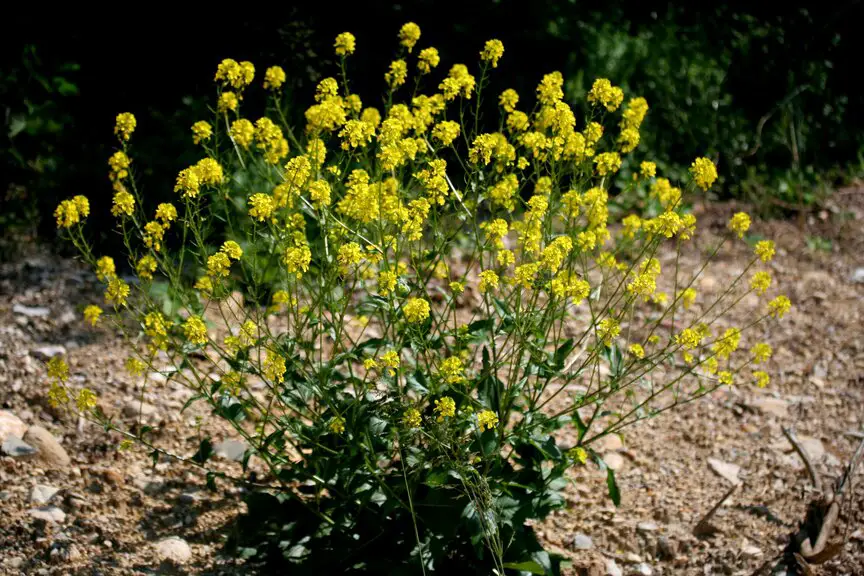
Where can you find it in nature?
Its habitats include waste places, ditches, roadsides, fields, and gardens. The plant grows in average to rich soils, moist to mesic conditions, and full to partial sun.
Re-seeding is the main method of spreading the plant. It grows from a taproot and spreads by re-seeding.
Other yellow rocket uses
It has been used as a poultice to treat wounds because of its vulnerary properties. It is an appetizer, an antiscorbutic, and a diuretic when made into tea.
Wintercress or yellow rocket is an early source of nectar and pollen for bees and butterflies.
This plant is also used in gardens to attract caterpillars and other insects and distract them from other fruits and vegetables growing in the garden.
Ana has always been interested in all things nature and flora. With her expertise in home gardening and interest in foraging, she has been spending her weekends and free time looking for edible native plants, flowers, and fungi. One of her many hobbies includes testing new savory and sweet recipes, juices or teas made from freshly picked plants, wild fruits, or mushrooms.

